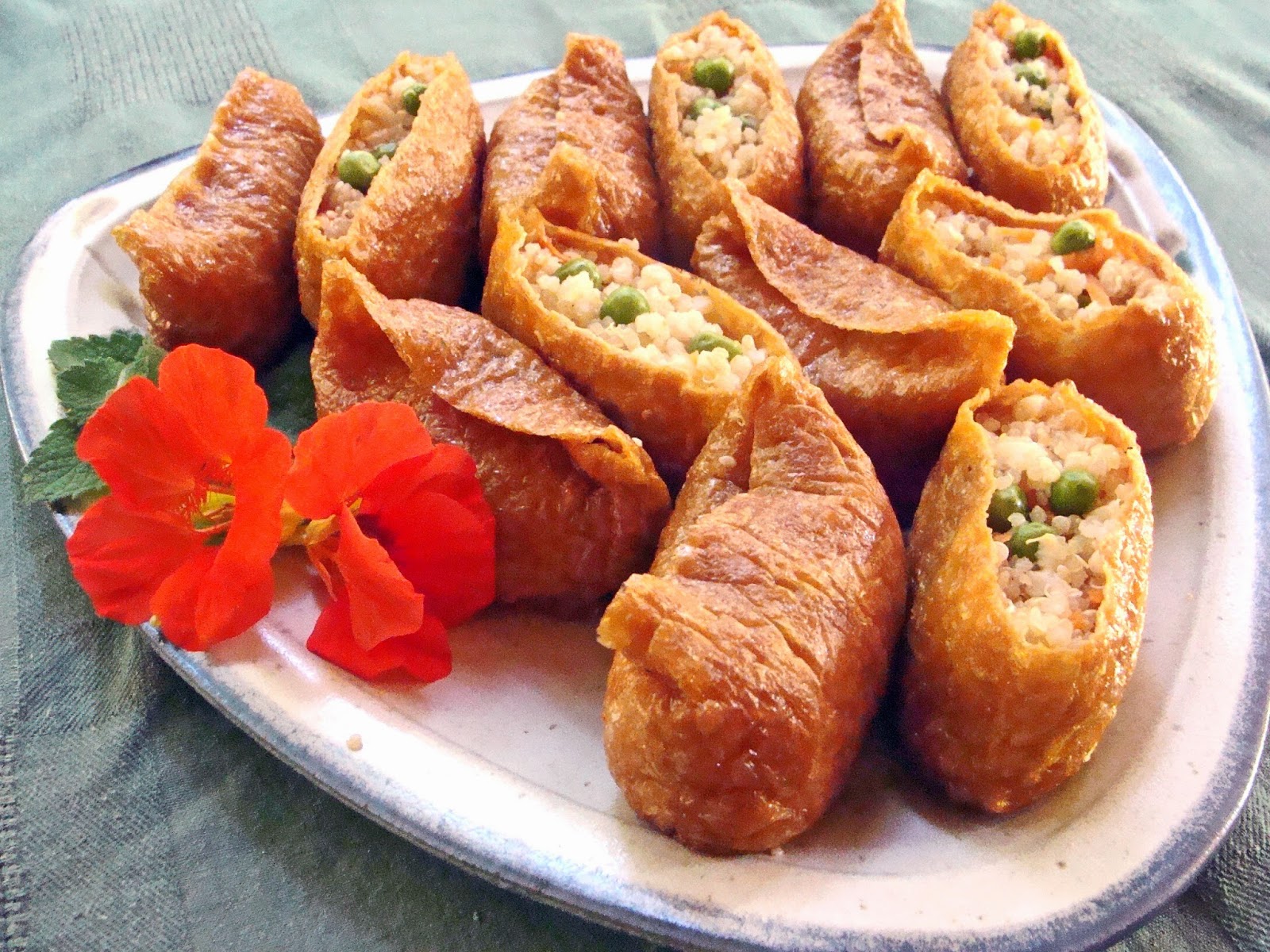We have such beautiful kale this year and such alot of it! I’m trying to incorporate it into as many dishes as possible. (Fortunately, we both love it!).
Last night we had our friend Brenda over for dinner and I made a kale lasagne, using up 1 1/2 lbs of fresh kale, and some tofu ricotta and homemade spaghetti sauce that I had in the refrigerator. It was delicious and definitely a keeper! I served it with some lovely roasted beets from my friend Holly, just sprinkled with balsamic vinegar, olive oil and fresh parsley.
We ended the meal with some tea and organic green grapes– very satisfying!
BRYANNA’S KALE AND VEGAN SAUSAGE
LASAGNE
About 1 1/2 lbs. fresh kale (weighed before stripping the leaves from the stalks), washed and cut into thin strips
1 tablespoon olive oil
1 tablespoon dark sesame oil
2 large onions, thinly sliced
About 12 oz. slightly spicy vegan sausages, crumbled (I used Tofurky Italian, but you could use Field Roast Italian or your own homemade)
4 cloves garlic, minced
1/2 tsp. red chile flakes
(omit if you sausage is very spicy)
Salt and freshly-ground black pepper to taste
About 3 cups homemade vegan plain tomato-y spaghetti sauce or your favourite
storebought variety
1 recipe
Ricotta di Soya (Tofu Ricotta)
(There’s also an Almond Ricotta recipe at that link, too, but you’ll need to make about 1 1/2 times that recipe.)
About 1/2 cup soy parmesan
(such as Go Veggie!) or your favourite parmesan sub
Cook the lasagne noodles according to the package directions—don’t overcook! Rinse and drain them and lay them out flat on a baking sheet.
Place the sliced kale in a large pot. Boil about 1 quart of water (in an
electric kettle, if you have one—it saves energy) and pour it slowly over the kale, mixing with a long spoon until it is all submerged. Cover and let it sit for about 10 minutes while you slice the onions, etc. After 10 minutes, drain the kale in a colander, rinse briefly with cold water (until cool enough to handle), and then squeeze as much water as possible out of the kale. Fluff it out a bit with your fingers after squeezing it.
Heat the oils in a
large heavy skillet over medium-high heat and add the sliced onions and sausage crumbles. Sauté them, stirring frequently, until the onion has softened and the sausage browned a bit. Add the garlic and red chile flakes (if using) and sauté briefly. Add the kale to the pan and sauté again briefly. Season the mixture to taste with salt and freshly-ground pepper.
Preheat the oven to 400°F, if you are going to bake immediately after assembling the lasagne.
Oil a 9 x 13”
bakingpan or dish. Lay 4 of the lasagne noodles to cover the bottom of the pan. Spread the noodles evenly with 1 cup of the spaghetti sauce. Add half of the sausage/kale mixture and spread evenly. Cover that with half of the ricotta, spreading evenly. Sprinkle evenly with 1/3 of the soy parmesan. Lay 4 more of the lasagne noodles over the casserole.
Repeat the layering as before. Cover with the remaining 4 lasagna noodles. Spread evenly with the remaining 1 cup of spaghetti sauce and sprinkle with the last of the soy parmesan. Cover the pan loosely with foil or baking parchment.
Bake at 400°F for 40 minutes. Remove the foil or
baking parchment and let sit for about 10 minutes before cutting.
Enjoy!
The kitchen journal of a vegan food writer…For the 21st
century we need to learn to cook for ourselves again,
and learning to cook vegan can be a bit intimidating.
I’d like to help with that, from my kitchen to yours.
Bryanna Clark Grogan, author of 8 published vegan cookbooks and The Vegan Feast quarterly cooking newsletter. Moderator of the beginners’ vegetarian forum on vegsource.com.



